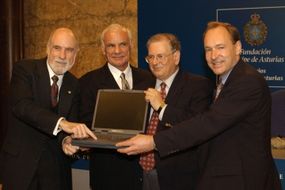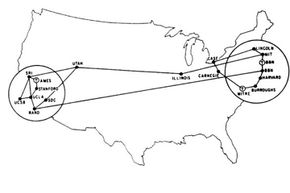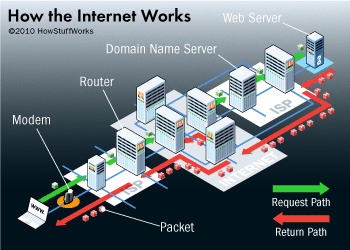The first big steps in building the internet stemmed from a project called ARPANET (Advanced Research Projects Agency Network).
The United States Department of Defense (DoD) funded a project to build the technology that could support computer networks even if the computers connected to the network used different operating systems.
Before ARPANET, all computer networks were limited in size and homogenous, meaning all the machines connected to the network were identical.
The program manager for the ARPANET project was Larry Roberts, who was heavily involved in the system's design. An engineer named Mike Wingfield designed the interface that would allow a computer to link with an internet message processor (IMP), a device that allowed different computers to communicate across the same network.
Transmission Control Protocol and Internet Protocol
Hardware wasn't the only obstacle. Computer scientists had to figure out a way to make different machines understand one another through a common set of rules called protocols.
Two of the most important protocols were the transmission control protocol (TCP) and internet protocol (IP). These sets of rules replaced an earlier set called the Network Control Protocol. They're what ultimately allowed the ARPANET computers to connect to other networks.
The two people responsible for developing these protocols were Robert Kahn and Vinton Cerf.
Packet Switching Method
Three other people who contributed to the way the internet works were Paul Baran, Donald Davies and Leonard Kleinrock. These mathematicians designed packet switching, which is how computers send information over the internet.
Rather than send data as a giant file, computers divide files up into packets. It's possible, though not likely, that each packet associated with a single file could take a different pathway through a network to reach its destination. Once there, the receiving computer reassembles the file based on information included with each packet.
Other notable contributors were Ray Tomlinson, who invented e-mail, and Abhay Bhushan, who developed the original specifications for file transfer protocol (FTP).
The Domain Name System
In 1983, Paul Mockapetris invented something that's key to the way we interface with the internet: the Domain Name System. Devices connected to the internet all have addresses that are a series of numerals.
But most people aren't very good at remembering long strings of numbers. Mockapetris developed a way to let people type in word-based addresses that computers could cross-reference with a database of numerical addresses.





